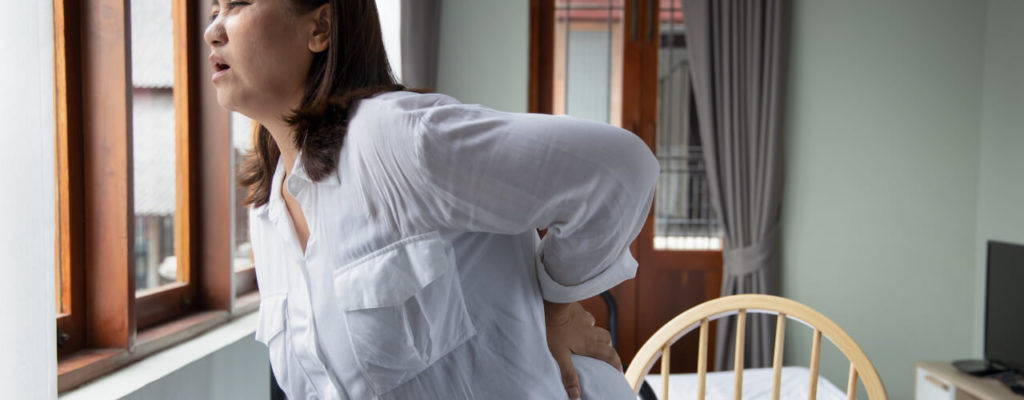Discovering When it is Time to Seek the Help of a Physical Therapist
A herniated disc can occur anywhere in your spine. At our physical therapy practice, we often see herniated discs among our patients with back, arm, and/or leg pain.
If you believe that your pain and dysfunction may be caused by a herniated disc, we encourage you to contact us today to schedule a PT appointment. Our experienced team can help you understand the source of your symptoms, and they can help heal the injured disc for long-term relief.
You should see a physical therapist for herniated disc pain when…
Research shows that physical therapy is effective in the treatment of herniated discs. If your symptoms affect your daily life or work activities, or if your symptoms persist for more than two weeks, we advise that you consult with a physical therapist.
Physical therapy interventions such as spinal traction, remedial exercises and non-invasive modalities such as electrical stimulation or diathermy can heal the injured disc, alleviate pain, and help you avoid recurring issues.
Physical therapy may also be advised if you have been told by a surgeon that you may need spinal surgery to correct the protrusion. In many cases, surgeons ask their patients to work with a physical therapist prior to a spinal fusion or disc decompression procedure, in order to improve your core strength and spinal health. This can maximize surgical outcomes and reduce the risk of postoperative complications.
Interestingly, research shows that even “idiopathic” cases of back pain (no known cause) respond positively to physical therapy. In other words, even if it’s not entirely clear whether you have a herniated disc, our services can still help.
Are you at risk of developing a herniated disc?
In addition to analyzing your symptoms and performing various tests and measures, a physical therapist can help you determine if you have a herniated disc by assessing your medical history and lifestyle.
We’ll look for risk factors known to be linked to herniated discs, including:
- Age between 30 and 50
- Frequent bending, heavy lifting, or twisting
- Obesity
- Male gender
- Acute trauma, e.g., auto accident or fall
- Smoking
- Physically demanding occupation
How to tell if a herniated disc is the culprit for your back pain
Spinal discs are small soft structures found between vertebral bones. Their main jobs are to absorb shock and maximize mobility within the spine. On the outside, these discs are tough and fibrous, but on the inside they are soft and gel-like.
A herniated disc occurs when the tough outer layer of the disc (called the annulus fibrosis) ruptures. This allows the inner gel substance (called the nucleus pulposus) to leak out. The ruptured disc tissue can trigger an inflammatory response and compress nearby structures, including joint receptors and spinal nerve roots.
Interestingly enough, not all herniated discs will lead to pain (especially because the discs themselves are relatively low in innervation and vascularization). However, when a herniated disc does cause symptoms, these symptoms often include:
- Pain that improves or “centralizes” (moves toward the spine) with spinal extension, such as when lying down or lying prone
- Pain that worsens with forward flexion or prolonged sitting—forward flexion may also cause the pain to “peripheralized” or move further away from the spine
- Arm or leg pain, numbness, tingling, and weakness (if the herniated disc compresses on an adjacent nerve root that innervates the affected limb)
- Neck or back pain, stiffness, and muscle spasms at the level of the injured disc
A herniated disc is similar to a bulging disc; in the latter condition, the disc tissue may protrude out of place but will not rupture.
Ready to get started?
According to SpineUniverse,
“Physical therapy often plays a major role in herniated disc recovery. Its methods not only offer immediate pain relief, but they also teach you how to condition your body to prevent further injury.
There are a variety of physical therapy techniques. Passive treatments relax your body and include deep tissue massage, hot and cold therapy, electrical stimulation (eg, TENS), and hydrotherapy.”
If you’ve been living with herniated disc pain and you’re looking for relief, don’t hesitate to contact Dynamic PT & Rehab Services!
We’ll help you find the relief you’ve been looking for, so you can get back to living life comfortably.
Tags: Natural Pain Relief, Natural Treatment, Joint Pain, Physical Activity, physical therapy, Nutrition, aches and pains, chronic pain, Physical Health, physical therapists, opioids, Rehabilitation



